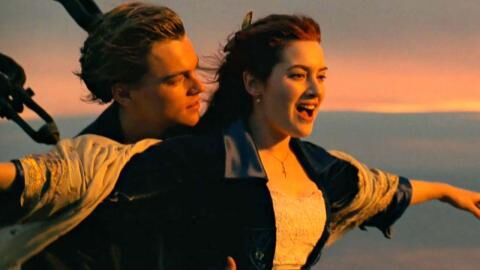The production of Titanic was a real test for James Cameron and his team, who were faced with a monstrous challenge to achieve such a successful result for a film that quickly became known as one of the most ambitious works of cinema.
Discover our latest podcast
Filming took longer than expected
Between 1996 and 1998, the filming of Titanic lasted 160 days, whereas it had been planned to take just 138. At the time, the film benefited from a budget of 110 million dollars, which allowed James Cameron to experiment with production techniques and film in the depths of the ocean, which nearly cost him his life.
A giant studio built especially for the film
It was while filming the wreck of the Titanic in the Atlantic that James Cameron nearly didn’t resurface. Subsequently, the filmmaker, with with an impressive force of will, had a studio built in Baja, Mexico, located in the seaside resort of Rosarito. 65 million litres of water were poured into several basins, and a ten-storey, 236 metre-long ship was also built. “They built an entire town for the film. When I got there, there were three enormous cranes that whirled round, and thousands of employees busy at work. It was like the golden age of studios with Cecil B. DeMille and MGM […] Nothing could prepare you for the logistics of the project,” declared Billy Zane, the actor who played the horrible Cal Hockley, speaking about the monumental filming conditions during an interview for Empire.
Inside the liner replica, the decor, crockery, and glassware were reproduced exactly. The setting was also produced in individual sections, controlled by gigantic hydraulic mechanisms, in order to best reproduce the shipwreck.
A director ready to do anything for his film
James Cameron’s reputation was somewhat tarnished during the filming of Titanic, as it was for The Abyss, one of his previous feature films filmed in 1989. During the production of Titanic, the filmmaker suffered the wrath of critics, who reported that his film and the studio would sink due to his many “whims”.
They overran their budget of 110 million dollars, reaching 200 million according to estimations, after which Fox cleared new funds from Paramount. Each minute of the film therefore cost around a million dollars. Fully invested in this ambitious project unlike any other, James Cameron did everything to reassure producers and worked up to 20 hours a day.
“I remember speaking to James about everything that was coming out in the press and he responded, “Good. I suppose next time, I will have to make a profit film. We could say this is my artistic film,” a producer subsequently reported about the filmmaker, who apparently had only made rumours spread in the media.
At the end of the filming, during which some actors were terrorised by the filmmaker, starting with Kate Winslet, the producer Jon Landau said to his wife: “We did it. And no-one died.” In the end, Cameron’s demands, the phenomenal overspending, and the army of technicians made Titanic stand out as one of the most complete and successful films of the 90s, if not the entire history of cinema.















